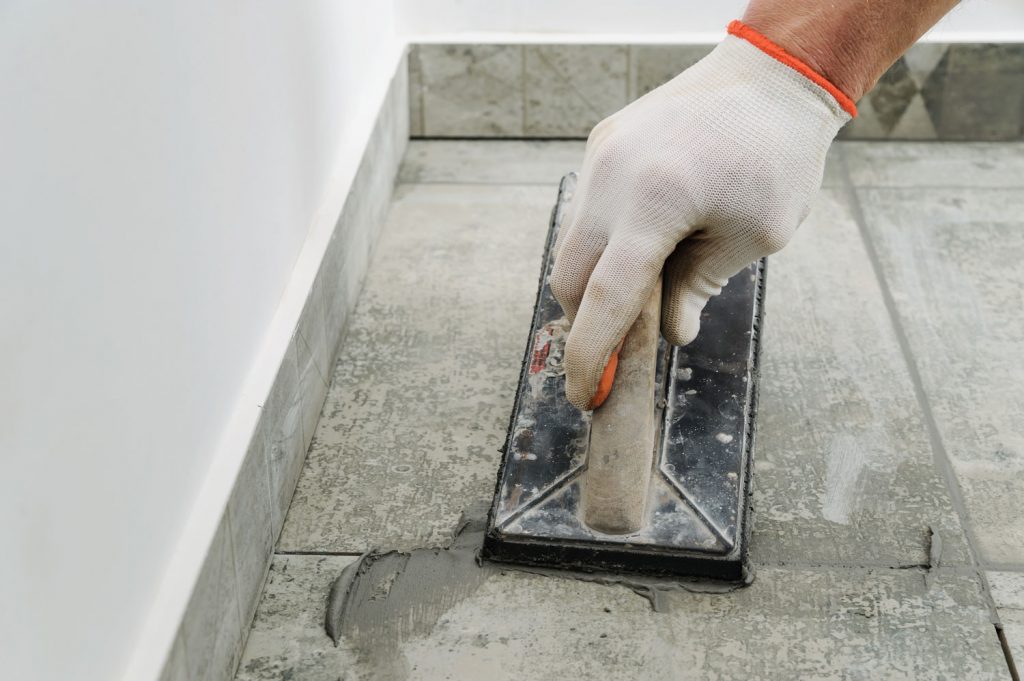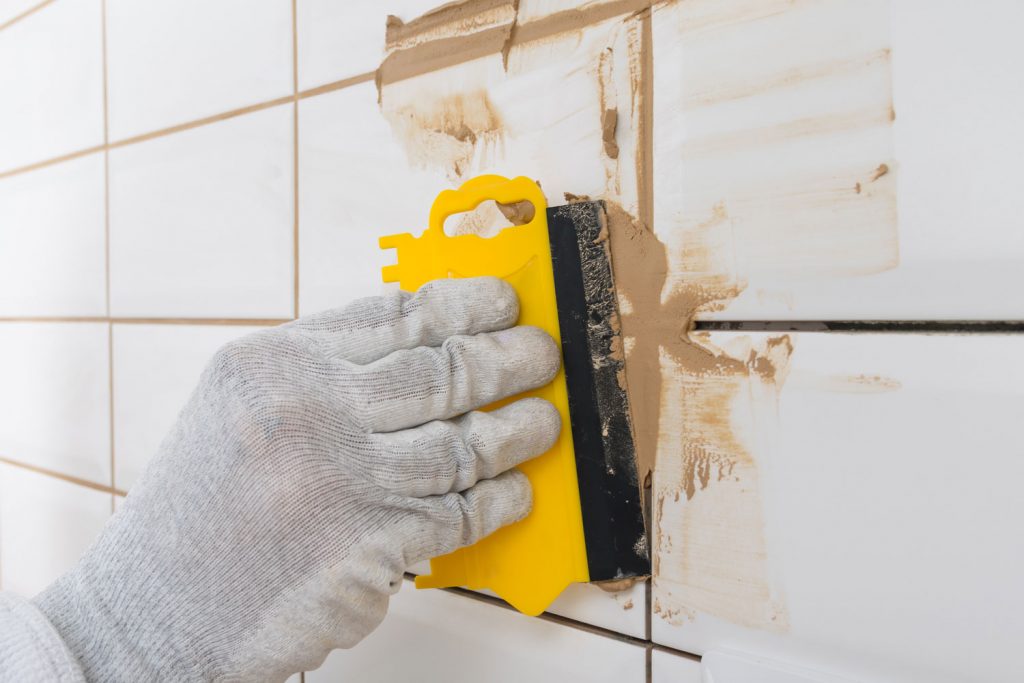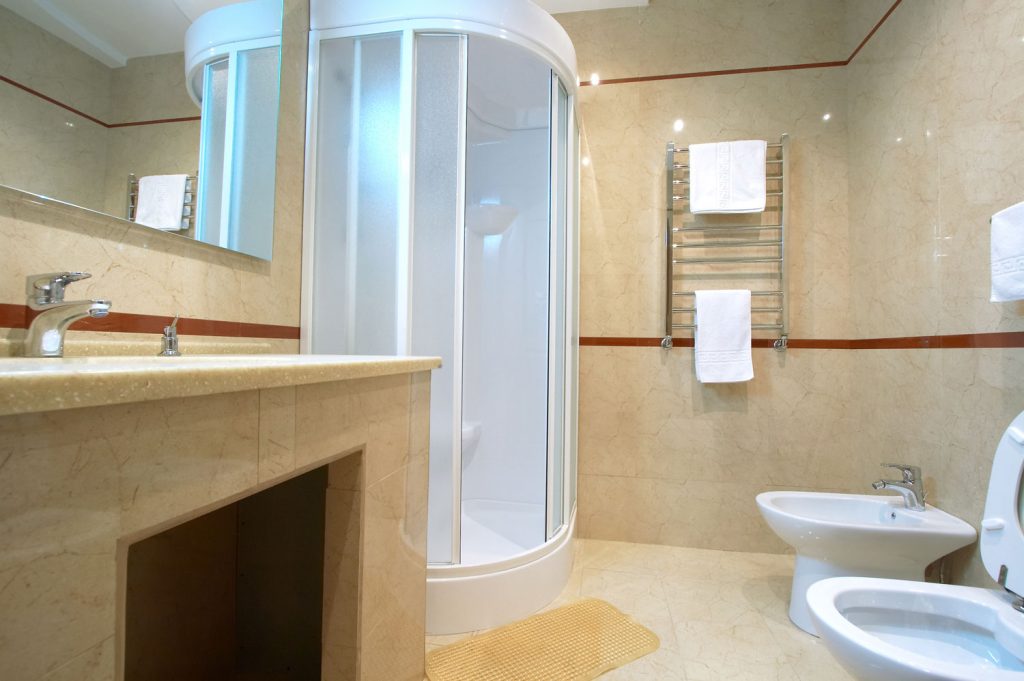Are you planning to install a new shower pan? Installing tile around your shower pan is not a hard project. There are, however, some structural rules you need to follow. We have done the research and have everything you'll need to know about installing tile around your shower pan.
When installing tile around your shower pan, they should not be installed flush with each other. You will need to leave a 1/16th-inch gap between the pan and tile. That gap should be filled with caulk for waterproofing.
There are specific places in your shower where you should use caulk and others where you should use grout. There are some contractors who use grout instead of caulk to fill in the gap which can be worse in the long run. Keep reading for the best way to install tile around your tub and more.
![Contractor sealing shower pan to keep water from seeping through the ceramic tile and rotting the floor, How Much Gap Between Shower Pan And Tile? [And How To Fill It In]](https://homedecorbliss.com/wp-content/uploads/2021/12/How-Much-Gap-Between-Shower-Pan-And-Tile-And-How-To-Fill-It-In-683x1024.png)
Why there should be a gap between the shower pan and tile
Before you begin installing your tile, you will need to measure 1/16th of an inch up from the shower base. That height will mark where your first row of tile can begin. You will need to maintain that gap around the edge to prevent the tile from cracking.
The best way to be sure that you are leaving enough room is to use spacers. When installing tiles, you will already be using spacers in between each one. The spacers used on the bottom will need to be at least 1/16th of an inch. This is a standard regardless of your regular tile distancing.
Click here to see these 1/16-inch spacers on Amazon.
During use, shower pans and tubs can flex and expand. That expansion will crack the tiles if there is nowhere for the pan to expand. This gap is especially important for large tiles with fewer relief points along the bottom.
How to fill in the gap
![]()
To fill in this gap, you will need caulk, a caulking gun, and silicone tools (optional). With your caulk loaded into the caulking gun, apply slow and steady pressure to extrude the caulk along the seam. After the caulk is applied, you can use a gloved finger or silicone tool to smooth over the seam.
Smoothing over the seam makes the joint look neater while also pushing the caulk further into the seam. Having a tighter seal will give you better leak protection.
What kind of caulk do you use in a shower?
Showers need an above-average level of water protection due to the conditions in your bathroom. A great product for waterproofing is silicone caulk. Silicone is durable, flexible, and resistant to rot.
You can find silicone caulk on Amazon.
The one downside to silicone caulk is that you cannot paint over it. If your bathtub or shower will be getting a new coat of paint, you should opt for an acrylic-based caulk. Make sure the caulk is siliconized, meaning that it also contains silicone. That added silicone helps keep it flexible and waterproof.
Click here to see this acrylic caulk on Amazon.
This caulk is white during application and dries clear. If you will be painting over your caulk, allow it to dry for at least 24 hours before applying the first coat.
Should I grout between the tile and shower base?
Just because grout works well for tiles does not mean it is great for every part of your shower. Grout is used to adhere the tiles to the wall.
Although the shower base is under the tile, you do not want to use grout for this application. Caulk should be used to fill the joint between the horizontal and vertical planes.
You will notice that some contractors do fill that space with grout instead of caulk. This is not the worst thing you could do, but caulk is definitely a better product for the job. Grout can prevent water from leaking through, but it is still porous.
Why you should use caulk for the gap
Caulk's flexibility is the main reason you should use it instead of grout to fill the gap. Since the wall is stationary and the shower pan can expand, you need something flexible in between them. If you were to fill the gap with something rigid, it can still cause cracking.
![]()
Along with creating a more flexible seam, caulk provides better waterproofing than grout. Grout is water-resistant once dry, but it is not completely waterproof. Leak protection is important when dealing with a part of your shower that water can pool in.
Not only can the grout itself crack but the tiles can also end up cracking too. Although caulk is more flexible than grout, it also has its setbacks.
The main drawback of caulk is that it dries out and shrinks over time. When it dries out, it is not able to provide waterproofing. You will need to touch up or replace caulk in your shower when needed. You should replace your caulk every five years, or whenever you see mold or mildew growth.
What is grout used for?

Grout is a kind of cement used primarily for setting tile. This is what peeks through the gaps in between tiles in showers, kitchens, and swimming pools. Grout is strong and rigid which makes it perfect for hard flat surfaces.
Click here to see this grout on Amazon.
You can use grout to secure anything on the same plane. For example, you can use it on a verticle wall of tile. If you are installing tile on the floor of your shower, it can be used on the floor as well. The only instance where you should use grout on a joint between walls is if the floor and wall are both rigid.
There is also something called epoxy grout on the market. This grout is a lot more waterproof and flexible than cement grouts. Epoxy grout is used less frequently because it costs more than cement grouts. It is also a little more difficult to work with but will be worth it for the added benefits.
Check out this epoxy grout on Amazon.
Can I use caulk instead of grout in the shower?
![]()
Caulk and grout are quite different in their functionality. Caulk should only be used as a sealant for cracks and joints. You should not use caulk to adhere tiles to shower walls. It can be used on vertical and horizontal wall seams including around the tub.
Grout should be used to adhere tiles to the walls. Grout is a kind of cement and will not be worn down over time by water. Caulk is not temperature resistant and can become unreliable to hold up tiles.
How long after grouting can you caulk?
If you are applying both grout and caulk, the grout will need to dry first. Grout takes a minimum of 24 hours to dry completely. It can take up to 72 hours to fully cure some brands of grout. Be sure to check your specific instructions for curing time.

Before grout is fully cured, the grout is much more porous. You want the grout to be hard and water-resistant before applying caulk. One way you can test if the grout is cured is to sprinkle it with water. If the water gets absorbed, the grout is not cured. If it beads up and rolls off of the surface, you can caulk.
To wrap it up

Installing tile around your shower pan is pretty straightforward. Leaving that gap is a small detail that can have a huge impact on your shower over time. Remember to only use grout to install tile, and use caulk to seal seams where walls connect.
There is more to installing a shower than caulk and grout. For more tile installation tips, read our article on if you should tile under a shower base. If you are using mortar, read our article on what type of mortar to use under a shower base.





